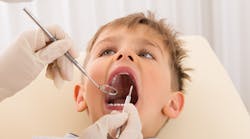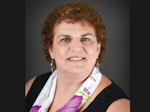Share a Smile: Ensuring kids get the dental care they need during the pandemic
Give Kids a Smile (GKAS) Day has been one of my favorite days since it was introduced in New Jersey in 2003. When COVID-19 started spreading through the nation in spring 2020, we wondered how we would be able to provide free dental care to kids without creating super spreader events. Share a Smile (SAS) was developed to do just that!
In collaboration with the five New Jersey dental hygiene programs and the New Jersey Academy of Pediatric Dentistry (NJAPD), an adjunct program was developed. A referral system was borne from the idea that current dental hygiene students must demonstrate competency in treating children. The president of NJAPD, Dr. Elisa Velazquez, jumped at the chance to take charge of this pilot program. Stacy Onofrietti, PhD, MS, RDH, CHP, signed on to help with administrative tasks and data collection. All five of the New Jersey dental hygiene programs were eager to participate.
Before COVID, I hosted large GKAS events with clowns, caricaturists, balloon animals, cartoon characters in costume, seeing eye puppies in training, and of course, the tooth fairy. During the 15 years that I hosted GKAS at Rowan College at Burlington County, we treated 2,308 children to 4,675 procedures for a total of $767,297 worth of donated dental services. The pandemic meant that we could no longer have a large one-day event with volunteer dentists, hygienists, assistants, students, and community members creating what I lovingly called organized chaos.
Visualizing how we could create a safe way to provide access to free dental care for children in need, I consulted with the pediatric community, and we came up with a collaborative idea—a small pilot program to test the concept. If it worked, we could use it to provide free care for children whose needs surpass what one day of treatment at GKAS might provide.
Also by Linda Hecker
Sharing the smiles
Share a Smile was created by recruiting pediatric dentists as volunteers. NJAPD was able to sign up members from nearly all counties in New Jersey. The five dental hygiene programs asked dentists who had volunteered at their schools during previous GKAS events if they would like to be included. A Google doc of volunteer dentists for the hygiene programs became the modus operandi for referrals. A total of 28 dentists agreed to accept referrals for children in need of dental treatment from New Jersey’s dental hygiene programs.
Any children seen by the dental hygiene students during regular clinic hours who needed treatment beyond what could be provided by the students were referred to a dentist from the SAS database. The children were given a prophylaxis, x-rays, sealants as needed, and fluoride treatment, which might include silver diamine fluoride. At the conclusion of the hygiene appointment, the parent or guardian was given a list of potential dental offices to complete the child’s treatment at no cost. An appointment was made by the program’s receptionist right then and there and noted in the Google doc data base.
The best results obtained by our outcomes survey was that 100% of our participating hygiene programs expressed their desire to continue the program. All participants agreed that the pandemic negatively affected the number of children treated but responded that the SAS program would help find dental homes for children and should be expanded.
Actual survey results reflect a slight increase in the average number of children participating in the program (table 1). This can be attributed to the extension of the program from a one-day occasion to a 15-week, semester-long event. In the interest of maintaining safe distancing and to lower indoor capacity limits, SAS was spread out over the course of the semester.
I believe the low referral rates reflect the participating school’s preference for dentists who had previously volunteered in their facilities rather than assigning children to practitioners they didn’t know. Many of these practitioners had participated in traditional GKAS activities by opening their offices rather than attending an event. While SAS volunteers came from many regions in the state, few were located in the southernmost reaches of our dental hygiene programs. One of our expansion goals is to actively engage pediatric practices with close proximity to the hygiene programs.
Looking forward, Share a Smile can grow and be used as an adjunct to traditional Give Kids A Smile Day. During past events several pediatric dentists have told parents, “If you bring your child to my office, I will complete their treatment for free. I just can’t do any more today.” Wouldn’t it be nice if any GKAS patient who needed dental treatment requiring more than one visit could have their dental disease treated? SAS could be just the ticket to fill this need.
Editor's note: This article appeared in the February 2022 print edition of RDH magazine.









